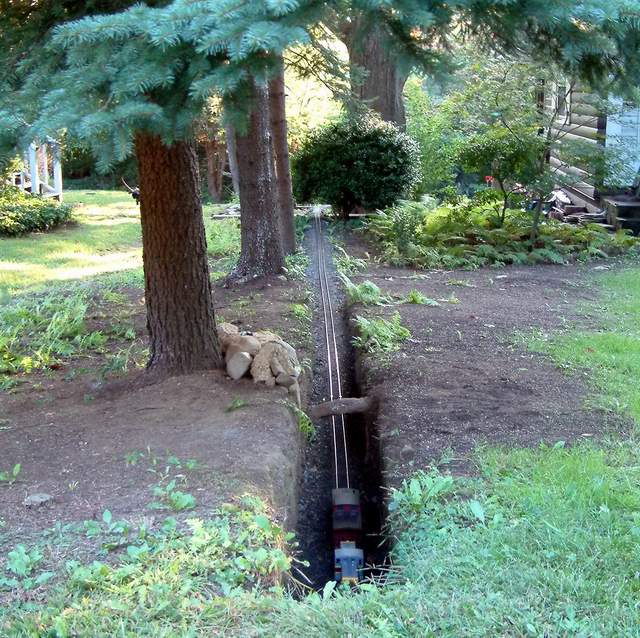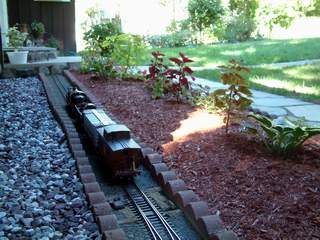My current layout consists of a balloon track and yards (partially complete) indoors, and a main line terminating in a large wye outdoors. This is a nice set up for an out-and-back passenger excursion, but doesn’t offer much in the way of switching operations outdoors.
To add some interest, I have my eye on the open garden area between the legs of the wye. I have track in stock and cooler weather is coming.
I laid out some paper templates tonight to see what I could easily add. I have both “Wide” (10’) and #6 switches in stock. All my outdoor switches to date (3) are #6. I’m thinking of making a rule that all main-line switches be #6, but allow tighter switches inside yards and sidings. Does this make sense or am I wasting my #6’s for sidings with this thought?
In surveying the area, I could use 1 “wide” and get about 8 Ft. of clear industry siding beyond the switch. -OR- I could use the #6 on the main leading directly to the “Wide”. This would give me two industrial sidings, one about 7 Ft. the other about 5 Ft. Using straights beyond the switches would allow coupling without any problems.
Are two tracks really better than 1? Maybe I should look at other locations where I could add a second industry to use the second switch.
Decisions - Decisions. No matter what I decide, I’ll probably change it in a year or two anyway 
JR




